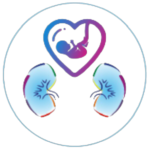Kidney and Dialysis: A Comprehensive Guide
The kidneys play a crucial role in maintaining overall health by filtering waste products and excess fluids from the blood, regulating blood pressure, producing hormones, and removing waste through urine. When kidney function is impaired due to conditions like Chronic Kidney Disease (CKD), the body’s balance is disrupted, leading to severe health issues.
Kidney failure occurs when:
- 85–90% of renal function is lost
- Glomerular Filtration Rate (GFR) drops below 15
- Kidney function becomes insufficient to sustain life
Chronic Kidney Disease and Dialysis
Chronic Kidney Disease (CKD) progresses over time, and when kidney function diminishes significantly, treatments like dialysis become necessary. Dialysis is a medical procedure that replaces some functions of the kidneys, including waste removal and fluid regulation. There are two primary types of dialysis:
1. Hemodialysis
- Procedure: Blood is removed from the body, filtered using an artificial kidney (dialyzer), and returned to the body.
- Frequency: Typically performed three times a week, with each session lasting 3–5 hours.
- Location: Conducted in a hospital, dialysis center, or at home with proper training.
2. Peritoneal Dialysis
- Procedure: Blood vessels in the abdominal lining (peritoneum) filter the blood with the help of a dialysis solution containing water, salt, and other additives.
- Frequency: Can be performed daily, with two primary methods:
- Automated Peritoneal Dialysis (APD): Uses a machine (cycler) during the night.
- Continuous Ambulatory Peritoneal Dialysis (CAPD): Done manually, several times a day.
- Location: Typically performed at home.
When is Dialysis Needed?
Dialysis is necessary in the following scenarios:
1. Acute Kidney Injury (AKI):
- A sudden loss of kidney function over hours or days.
- Treated with intravenous fluids in a hospital setting.
- Dialysis may be required temporarily until kidneys recover.
2. End-Stage Kidney Disease (ESKD):
- Occurs when kidneys function at only 10–15% of their capacity.
- Defined by an estimated GFR (eGFR) below 15 mL/min.
- Dialysis is a lifelong necessity unless a kidney transplant is performed.
How Dialysis Helps
Dialysis replaces certain kidney functions to:
- Remove waste and excess fluid.
- Maintain healthy blood mineral levels (e.g., calcium, sodium, potassium, bicarbonate).
- Help regulate blood pressure.
Side Effects of Dialysis
Both types of dialysis come with potential side effects:
Hemodialysis:
- Obstruction at the vascular access site.
- Muscle cramps.
- Hypotension (low blood pressure).
- Fatigue, dizziness, or nausea.
- Blood loss.
Peritoneal Dialysis:
- Increased risk of hernia.
- Weight gain.
- Infection at the catheter site or peritoneum.
Common Side Effects:
- Pruritus (itchy skin).
- Infections (blood, skin, or peritoneal).
Hemodialysis vs. Peritoneal Dialysis
|
Aspect |
Hemodialysis |
Peritoneal Dialysis |
|
Location |
Hospital or home |
At home |
|
Frequency |
3–5 times a week |
Daily (4–6 times) or nightly (with cycler) |
|
Procedure |
Blood filtered using a dialyzer |
Blood filtered using the peritoneum |
|
Dietary Restrictions |
More restrictive (low phosphorus, potassium) |
Fewer restrictions |
|
Side Effects |
Fatigue, cramps, low BP, blood loss |
Weight gain, hernia, infection risk |
|
Flexibility |
Requires specific schedules |
Can be performed while traveling |
Frequently Asked Questions (FAQs)
1. What is Dialysis?
Dialysis is a treatment that aids in eliminating excess fluid and waste materials from the blood when the kidneys fail. It partially replaces kidney functions to maintain the body’s balance. Dialysis can be performed at home, in a dialysis center, or in a hospital.
2. What Stage of Kidney Failure Requires Dialysis?
Dialysis is typically required for:
- Acute Kidney Injury (AKI): Temporary support during recovery.
- End-Stage Kidney Disease (ESKD): When kidney function is below 15% of normal capacity (eGFR < 15 mL/min).
3. What is Hemodialysis?
Hemodialysis filters blood outside the body using a machine (dialyzer). Blood is removed, cleansed, and returned via a vascular access site created surgically.
4. What is Peritoneal Dialysis?
Peritoneal dialysis filters blood inside the body using the peritoneum as a natural filter. A cleansing fluid (dialysate) absorbs waste and is drained out via a catheter.
5. How Long Can a Person Live on Dialysis?
On average, dialysis extends life by 2–10 years. Some patients live much longer, depending on their overall health and adherence to treatment plans.
Dietary Considerations During Dialysis
Patients undergoing dialysis must monitor their diet to:
- Limit phosphorus, potassium, and sodium intake.
- Control fluid consumption to prevent fluid overload.
Managing Kidney Health with Expert Guidance
Understanding kidney health and the role of dialysis is essential for managing kidney-related conditions. Early intervention and adherence to treatment plans can improve both life expectancy and quality of life.
Dr. Sandip Bhurke a renowned nephrologist and kidney specialist in South Mumbai, provides personalized care to address each patient’s unique needs. With his expertise, patients can navigate the challenges of chronic kidney disease and look forward to a healthier future.




